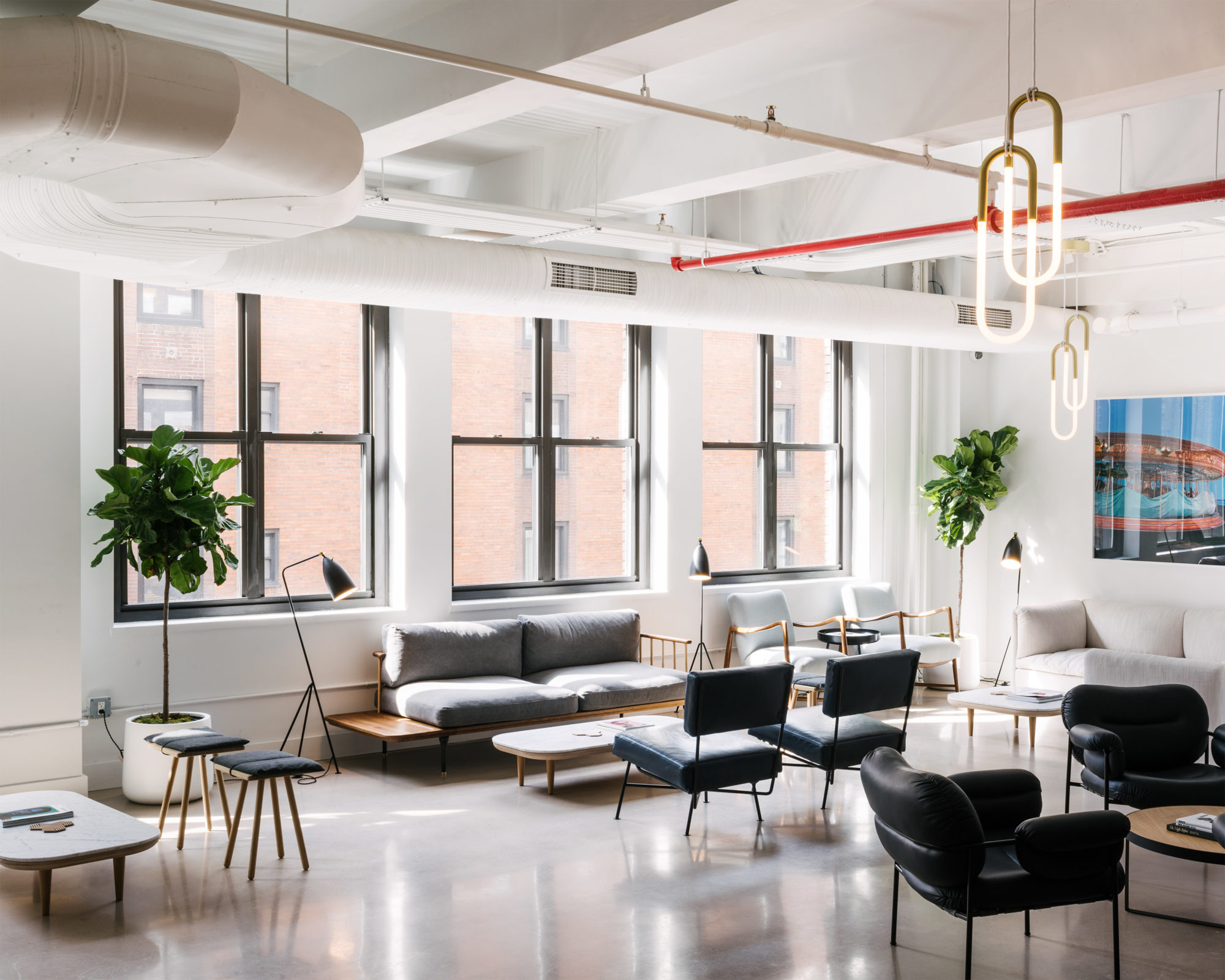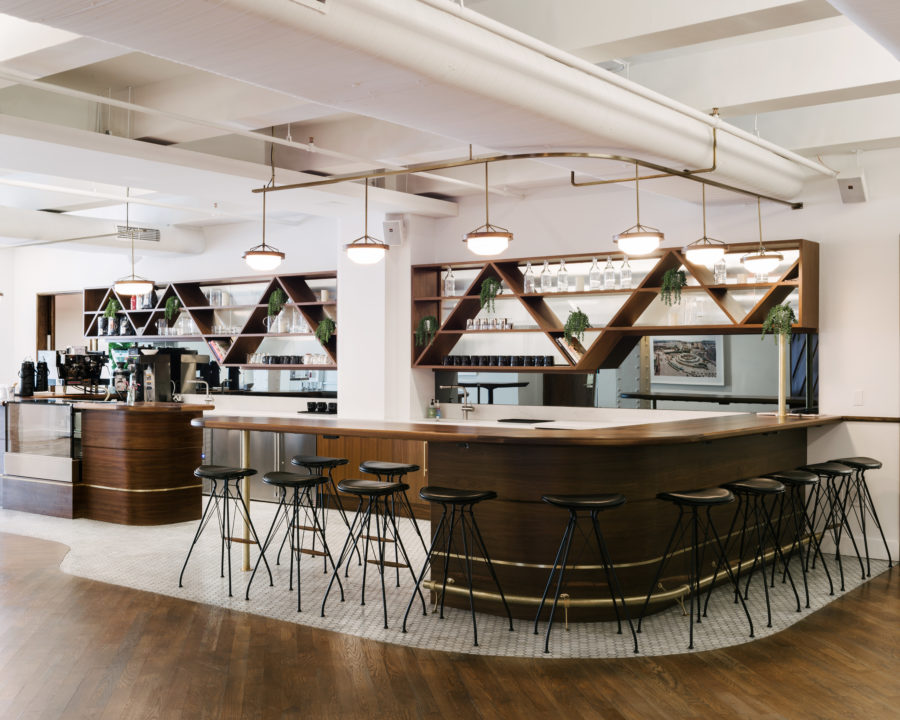Do briefcase warriors need a perfume-making seminar at work to be successful? How about a bean-bag couch? As coworking spaces become more ubiquitous in cities around the world, lifestyle amenities are now being deployed to entice members of the gig economy, blurring the line between social club and office. The over-the-top results can sometimes feel like something straight out of Silicon Valley—both the HBO show and the Bay Area region. Situated in Manhattan’s NoMad neighborhood, the swish new Blender Workspace aims to take the communal office concept and give it a more refined polish.
“We wanted an environment that is aspirational, one where the members determine what it is; we’re giving people a high-end platform to elevate their product, ” says Andrew Cohen, cofounder of Parts and Labor Design, the local firm responsible for Blender’s stylish aesthetic. (He and his partner Jeremy Levitt are investors in the brand.) “We wanted to create an alternative for high-caliber entrepreneurs,” adds Blender’s cofounder Scott Sassoon. “The clientele that joins Blender is made up of professionals who are already successful and do not need us to craft an image for them. Instead, we try to reflect the energy and spirit that the Blender community exhibits. We don’t make them cool—we’ve integrated programming in a creative space that helps support their existing lifestyle,” he says.
With years of experience designing restaurants and boutique hotels such as Tribeca’s groundbreaking Atera and the recently opened Thompson Nashville, Parts and Labor Design has a fine skill for conjuring up vibey spaces. It may have seemed like an incongruous fit when Cohen and Levitt were first approached for the project, but Sassoon was adamant that Blender’s identity come from a fresh perspective. “We were specific in asking if everyone had done an office before. The fact that they hadn’t—the finished product is similar to what you’d find in a boutique hotel.”











